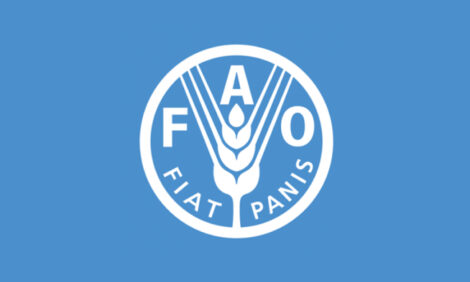



Premiums Paid For Traditional Breeds
UK - In recent times there has been a renewed interest in traditional breeds such as the Aberdeen Angus and Hereford on the back of bonus schemes currently in operation across the major NI plants.The processors have reported an increase in demand for beef from these traditional breeds to fulfill premium orders for major retailers and the food service sector.
The value of the available bonuses varies from plant to plant and from scheme to scheme with bonuses of up to 40p/kg over the average English and Welsh price available for eligible Aberdeen Angus cattle in some schemes.
Bonuses of up to 35p/kg are available on other Aberdeen Angus and Hereford schemes Tight supplies of eligible cattle at present combined with an increased demand has resulted in the processors paying significant premiums for animals that fulfil all of the criteria.
The plants currently have a range of bonus payments in place for Hereford and Aberdeen Angus prime cattle which are outlined in Table 1. A key aspect of the criteria for both the Aberdeen Angus and Hereford bonuses is that the animal must be sired by a registered pedigree bull.
The relevant breed societies have reported an increased interest from both the suckler and dairy industries due to the incentives of these bonus payments. This is likely to increase the supply of
eligible cattle in the years ahead with numbers remaining tight in the interim period.
This provides significant opportunities for those producers with Hereford and Aberdeen Angus cattle on the ground at present but also for producers planning to produce cattle for this market in the future. At present Aberdeen Angus and Hereford cattle represent a niche market in NI and represent a small proportion of total calf registrations.
In the first four months of 2013 a total of 5,264 Hereford calves were registered in Northern Ireland, accounting for three per cent of calf registrations. This is an increase of 500 head on the
number registered in the same period in 2012 (+10 per cent).
During the same period 18,196 Aberdeen Angus calves were registered accounting for 10.2 per cent of calf registrations. Chart 2 outlines the average price paid per kg for O+3 grade price reported steers from January 2012 to April 2013.
The black line represents the average price paid for Aberdeen Angus O+3 steers, the orange line represents the average price paid for Hereford O+3 steers and the blue line represents the average price paid for O+3 steers of all other breeds (non premium).
Organic cattle have been removed for the purposes of analysis as these attract significant bonuses and can skew the data.
The price paid per kilogram for O+3 Aberdeen Angus steers has been notably higher than the price paid for non premium cattle over the period in question as indicated in Chart 2. The average price paid for O+3 Aberdeen Angus steers during April 2013 was 383.5p/kg, 16.3p/kg higher than the 367.2p/kg paid for non premium steers.
It is worth noting that this differential is an average for O+3 steers and that a range of bonuses up to 40p/kg are available for Aberdeen Angus cattle. This particular bonus is not price reported since it is paid retrospectively so is not included in this analysis.
The price paid for O+3 Hereford steers was generally slightly higher than the price paid for non premium cattle up until March 2013. After this point a wider differential started to appear in the prices paid with an average O+3 Hereford price in April 2013 of 372.9p/kg, 5.7p/kg higher than the
price paid for non premium steers.
The emergence of this differential coincided with an increase in the promotion of Hereford beef schemes in several of the major processors. As with the Aberdeen Angus price it is worth noting that this differential is an average for O+3 steers and that a range of bonuses up to 35p/kg are available for Hereford cattle.
The major NI processors currently have in place a series of bonuses and penalties in an attempt to encourage producers to produce cattle within a desired specification but the application of these bonuses and penalties has been variable and has been closely linked to the supply of cattle. In recent weeks however the penalties for overweight carcases have been implemented more stringently due to limited markets for cuts of beef from these larger animals as outlined in previous articles in the Bulletin.
The average carcase weight of non premium O+3 steers from January 2012-April 2013 was 343kg, the average O+3 Aberdeen Angus carcase weight was 323kg and the average Hereford O+3 carcase weight was 326kg.
Aberdeen Angus and Hereford cattle by their genetic nature will produce lighter carcase weights which are more likely to meet the current desired specification of the plants for weight, if not for grade. At present the prime kill in NI is dominated by heavier continental bred cattle which in many cases produce carcases outside specification.
It is worth noting however that the production of these traditional breeds such as Hereford and Aberdeen Angus with lower carcase weights is at present a niche market and will not suit all producers or production systems. There are strong markets in place for better conformed continental bred animals provided that they meet the current requirements of the ‘golden box’.
A key requirement of this is that carcases should be within 280-380kg.
For further information on producing Aberdeen Angus or Hereford prime cattle producers should contact the procurement teams of the relevant processors, the relevant breed societies or the scheme operators.
TheCattleSite News Desk



